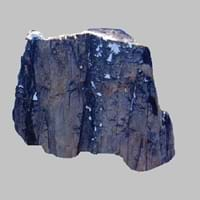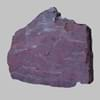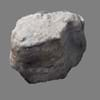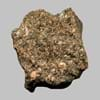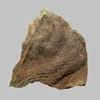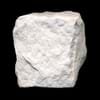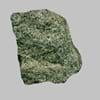Oil shale and Icelandite
Definition
Definition
Oil Shale is a fine-grained sedimentary rock from which oil is extracted
Icelandite belongs to volcanic igneous rocks which is rich in iron and belongs to andesite rock
History
Origin
Unknown
Iceland
Discoverer
Unknown
Ian S. E. Carmichael
Etymology
From Old English scealu in its base sense of thing that divides or separate
From its origin place near Cenozoic volcano near the parsonage Þingmúli in East Iceland
Class
Sedimentary Rocks
Igneous Rocks
Sub-Class
Durable Rock, Soft Rock
Durable Rock, Hard Rock
Family
Group
Not Applicable
Volcanic
Other Categories
Fine Grained Rock, Opaque Rock
Fine Grained Rock, Opaque Rock
Texture
Texture
Splintery
Aphanitic to Porphyritic
Color
Black, Brown, Buff, Green, Grey, Red, Yellow
Bluish - Grey, Grey, Pink, Yellow
Maintenance
Less
More
Durability
Durable
Durable
Water Resistant
Yes
Yes
Scratch Resistant
No
Yes
Stain Resistant
Yes
No
Wind Resistant
No
Yes
Acid Resistant
No
No
Appearance
Muddy
Dull and Soft
Uses
Architecture
Interior Uses
Not Available
Decorative Aggregates, Floor Tiles, Homes, Interior Decoration, Kitchens
Exterior Uses
Not Available
Office Buildings, Roof Tiles
Other Architectural Uses
Not Available
Curbing
Industry
Construction Industry
Cement Manufacture, Construction Aggregate, for Road Aggregate, Serves as an Oil and Gas Reservoir rock
Cobblestones, Construction Aggregate, for Road Aggregate
Medical Industry
Not Available
Not Available
Antiquity Uses
Artifacts
Artifacts, Jewellery, Sculpture, Small Figurines
Other Uses
Commercial Uses
An Oil and Gas Reservoir
Cemetery Markers, Creating Artwork
Types
Types
Carbonate-rich Shale, Siliceous Shale and Cannel Shale
Not Available
Features
Easily splits into thin plates, Generally rough to touch, Is one of the oldest rock, Very fine grained rock
Generally rough to touch, High silica content, Is one of the oldest rock
Archaeological Significance
Monuments
Not Yet Used
Not Yet Used
Famous Monuments
Not Applicable
Not Applicable
Sculpture
Not Yet Used
Used
Famous Sculptures
Not Applicable
Not Available
Pictographs
Not Used
Not Used
Petroglyphs
Not Used
Not Used
Figurines
Not Yet Used
Used
Fossils
Present
Absent
Formation
Formation
Oil Shale forms on the beds of seas and lakes and its formation starts with the organic debris settling and accumulating at the bottom of a lake or sea which are then transformed into rock with the help of high temperature and pressure.
Icelandite is a fine-grained, hard rock which is a type of metasomatite, essentially altered basalt. It forms with or without crystallization, either below the surface as intrusive rocks or on the surface as extrusive rocks.
Composition
Mineral Content
Albite, Biotite, Calcite, Chert, Chlorite, Dolomite, Hematite, Micas, Muscovite or Illite, Pyrite, Quartz, Silica, Sulfides
Amphibole, Apatite, Biotite, Feldspar, Garnet, Hornblade, Ilmenite, Magnetite, Plagioclase, Pyroxene, Quartz, Zircon
Compound Content
Ca, Fe, Mg, Silicon Dioxide, Sodium
Silicon Dioxide
Transformation
Metamorphism
No
Yes
Types of Metamorphism
Not Applicable
Burial Metamorphism, Cataclastic Metamorphism, Contact Metamorphism, Hydrothermal Metamorphism, Impact Metamorphism, Regional Metamorphism
Weathering
Yes
Yes
Types of Weathering
Biological Weathering, Chemical Weathering, Mechanical Weathering
Biological Weathering
Erosion
Yes
Yes
Types of Erosion
Chemical Erosion, Sea Erosion, Water Erosion
Chemical Erosion, Coastal Erosion, Sea Erosion, Water Erosion, Wind Erosion
Properties
Physical Properties
Hardness
2-3
7
Grain Size
Very fine-grained
Very fine-grained
Fracture
Not Available
Uneven
Streak
White
White
Porosity
Highly Porous
Less Porous
Luster
Dull
Vitreous
Cleavage
Slaty
Not Available
Toughness
2.6
1.1
Specific Gravity
2.2-2.8
2.5-2.8
Transparency
Opaque
Opaque
Density
2.4-2.8 g/cm3
2.11-2.36 g/cm3
Thermal Properties
Specific Heat Capacity
0.39 kJ/Kg K
23
2.39 kJ/Kg K
2
Resistance
Heat Resistant, Impact Resistant
Heat Resistant, Pressure Resistant, Scratch Resistant, Wear Resistant
Reserves
Deposits in Eastern Continents
Asia
Bangladesh, China, India, Israel, Jordan, Russia, Syria, Thailand, Turkey
India, Indonesia, Japan, Nepal, South Korea
Africa
Ethiopia, Kenya, Morocco, South Africa, Tanzania
Egypt, Ethiopia, Morocco, Namibia, South Africa, Tanzania
Europe
Austria, France, Germany, Greece, Italy, Romania, Scotland, Spain, Sweden, Switzerland
Austria, Finland, Germany, Italy, Romania, Turkey, United Kingdom
Others
Greenland
Not Available
Deposits in Western Continents
North America
Canada, USA
Mexico, USA
South America
Bolivia, Brazil, Chile, Colombia, Ecuador, Peru, Venezuela
Argentina, Bolivia, Chile, Colombia, Ecuador, Peru, Venezuela
Deposits in Oceania Continent
Australia
New South Wales, New Zealand, Queensland, Victoria, Western Australia
New South Wales, New Zealand, Western Australia
All about Oil shale and Icelandite Properties
Know all about Oil shale and Icelandite properties here. All properties of rocks are important as they define the type of rock and its application. Oil shale belongs to Sedimentary Rocks while Icelandite belongs to Igneous Rocks.Texture of Oil shale is Splintery whereas that of Icelandite is Aphanitic to Porphyritic. Oil shale appears Muddy and Icelandite appears Dull and Soft. The luster of Oil shale is dull while that of Icelandite is vitreous. Oil shale is available in black, brown, buff, green, grey, red, yellow colors whereas Icelandite is available in bluish - grey, grey, pink, yellow colors. The commercial uses of Oil shale are an oil and gas reservoir and that of Icelandite are cemetery markers, creating artwork.
|
||
|
||
|

